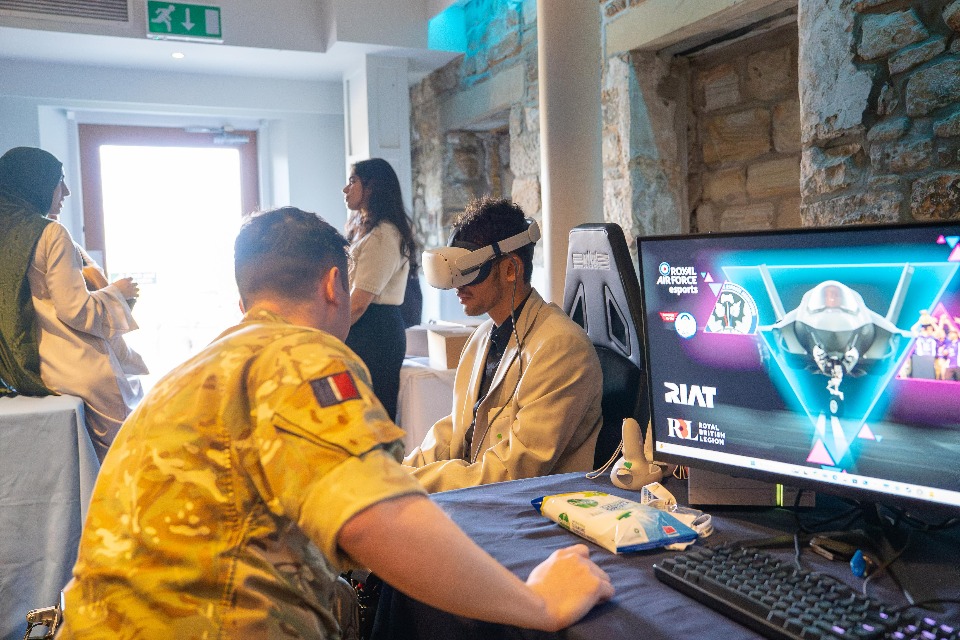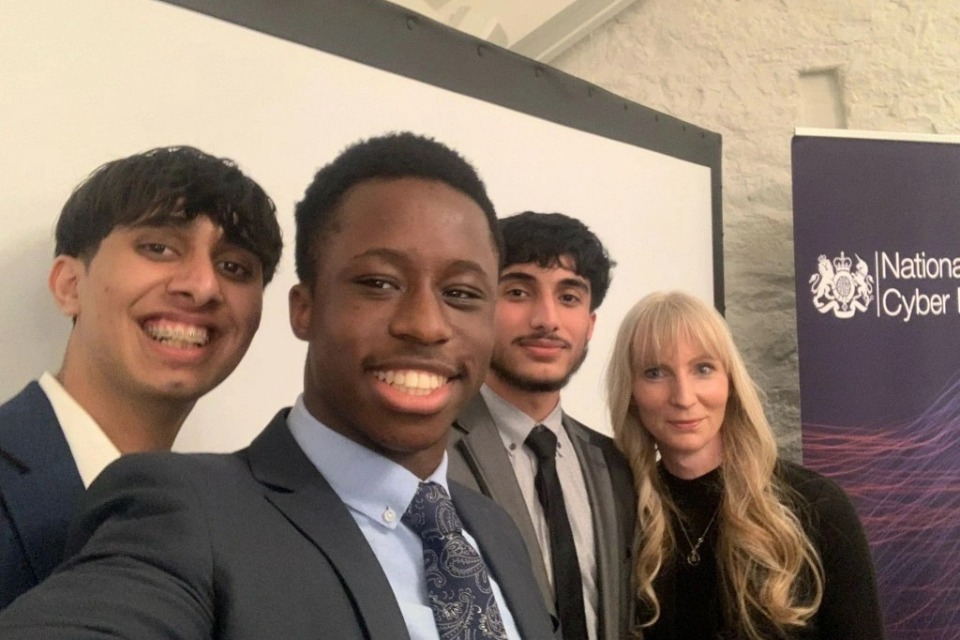100 talented young people from Lancashire complete Strategic Command's Bursary programme, helping to develop valuable cyber capabilities for the UK.
At a recognition ceremony, students from four Lancashire colleges graduated from the programme, each receiving a certificate acknowledging their hard work and newly acquired expertise, marking an important step in their journey toward cyber careers.
Kerry Harrison, Lead for the Lancashire Digital Skills Partnership, part of the Lancashire Skills and Employment Hub, said:
This bursary has opened doors for 100 young Lancashire students to careers they hadn't imagined. By working with Strategic Command, local colleges and industry, we've helped these talented young people gain valuable technical cyber and wider work ready skills that benefit both our regional economy and national security. Their success shows what we can achieve when government, education and business collaborating to tackle the digital skills gap.

MOD Crown Copyright
The celebration event featured career-focussed activities for students to explore their future options, including a jobs marketplace showcasing apprenticeships and internships, networking training and activities with the armed forces esports teams. Representatives from the National Cyber Force spoke about real-world cyber opportunities, putting the students at the centre of conversations about their potential careers.
Every student received a certificate detailing the activities they completed and the valuable work-ready skills they acquired through the Work Ready Lancashire project. Some students received additional recognition for their achievements. From each college, one student received the Immersive Labs Top Student Award for dedicating the most hours to their training, while two students earned Spotlight Awards for outstanding dedication throughout the programme.
Strategic Command's Chief Information Officer Charlie Forte and Director Functional Integration Claire Fry personally presented these awards, taking time to listen to students' stories, celebrate their successes and see the students' progress firsthand.
Claire Fry, Director Functional Integration, said:
Witnessing the journey of these students from day one to now has been truly inspiring and eye opening. They have grown not just their cyber and digital skills but as human beings, and this programme has enabled them to truly flourish as young adults. Collaboration between Digital Skills for Defence, Lancashire Skills and Employment Hub and industry partners has been critical in giving these students a real advantage for their potential career in a cyber and digital role in defence.
Launched in 2024 for 16-18 year olds studying STEM (Science, Technology, Engineering and Mathematics) subjects, the bursary provides practical cyber training, mentoring and financial support to students across four Lancashire colleges. Strategic Command's work with the Lancashire Cyber Partnership, which includes the National Cyber Force, is part of a drive to build cyber talent, with the northwest serving as an ideal venue to nurture these skills. This location serves as a launchpad for promising students to enter government departments, defence organisations and businesses working in the cyber sector.
The programme's success stems from partnerships with the Lancashire Skills and Employment Hub, local colleges, and industry partners who provide students with hands-on experience tackling real cyber challenges. The Digital Bursary is part of Strategic Command's wider work to build cyber talent, which includes the Cyber Direct Entry programme. By bringing together education, industry and government, Strategic Command is building the diverse and skilled workforce needed to protect the UK's digital future.







